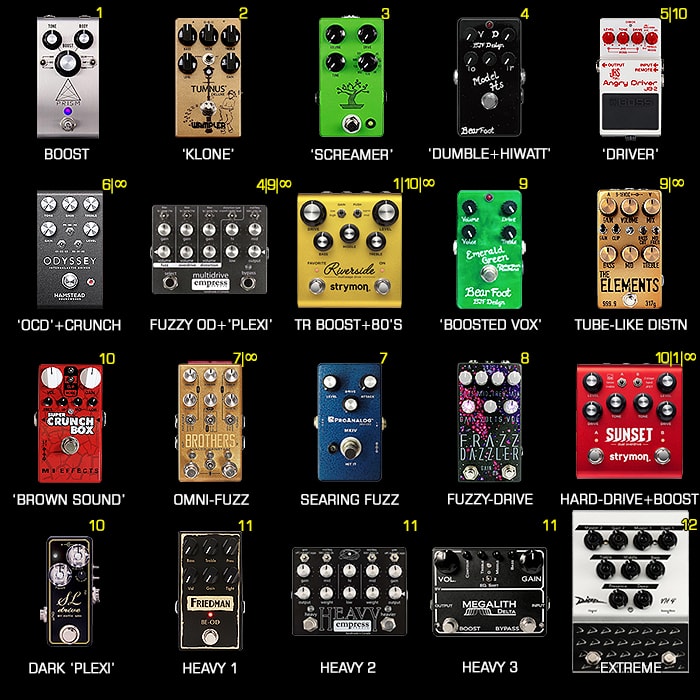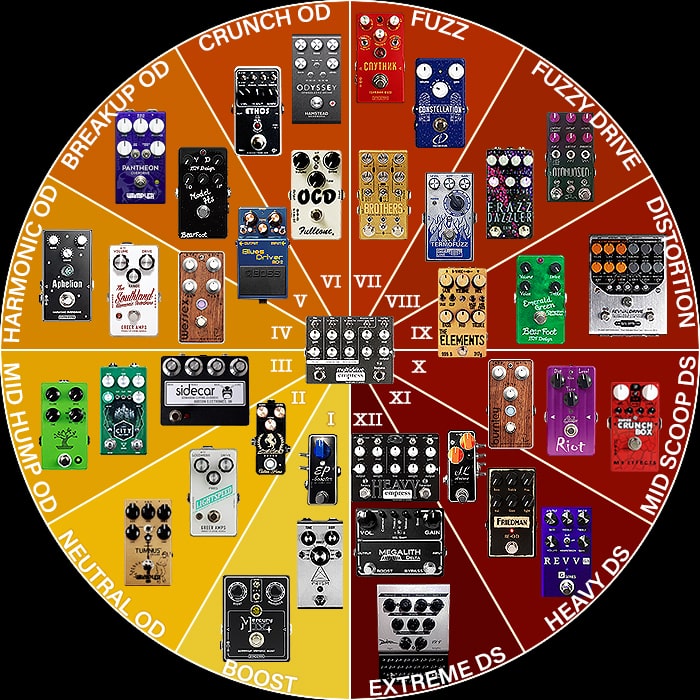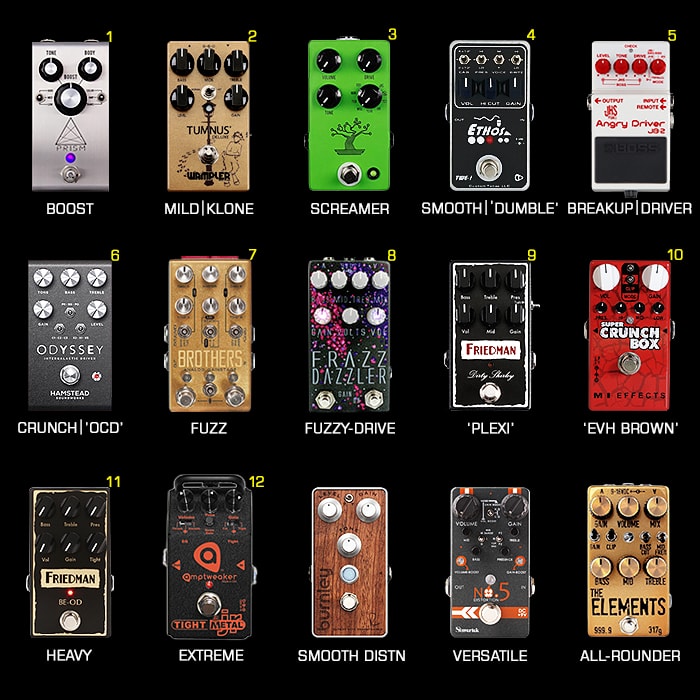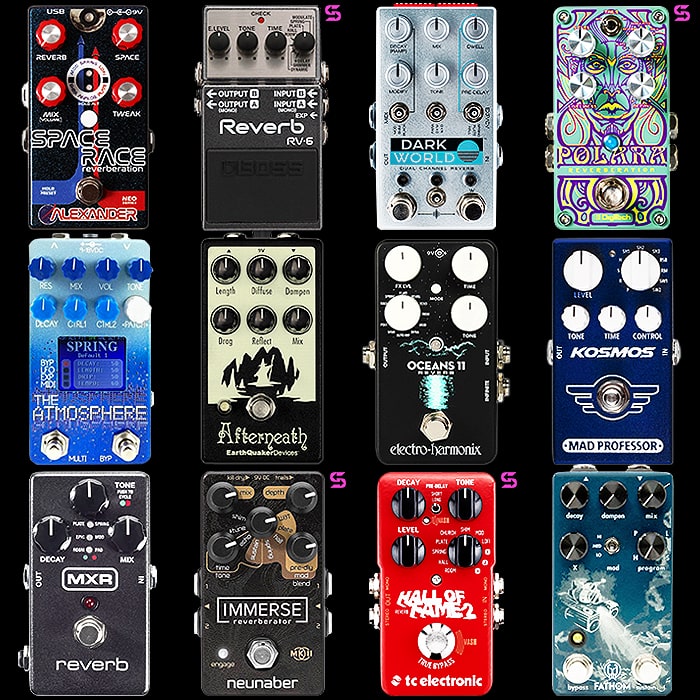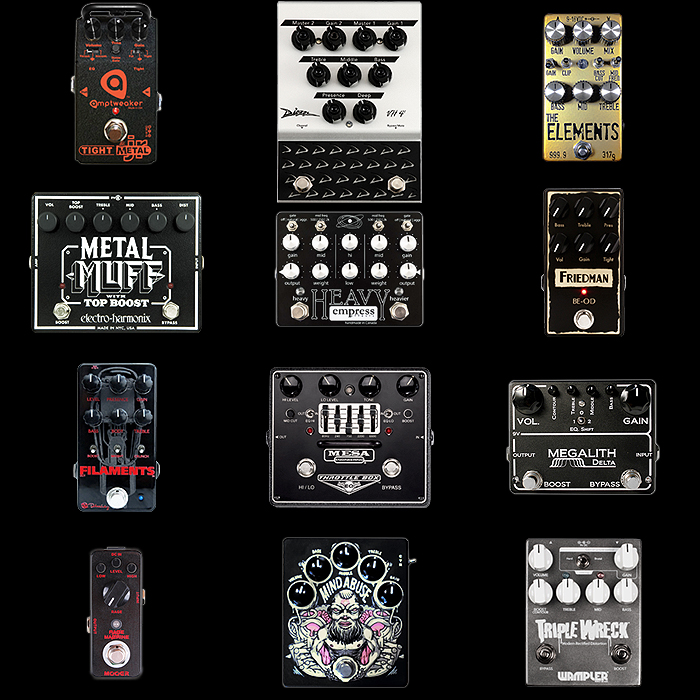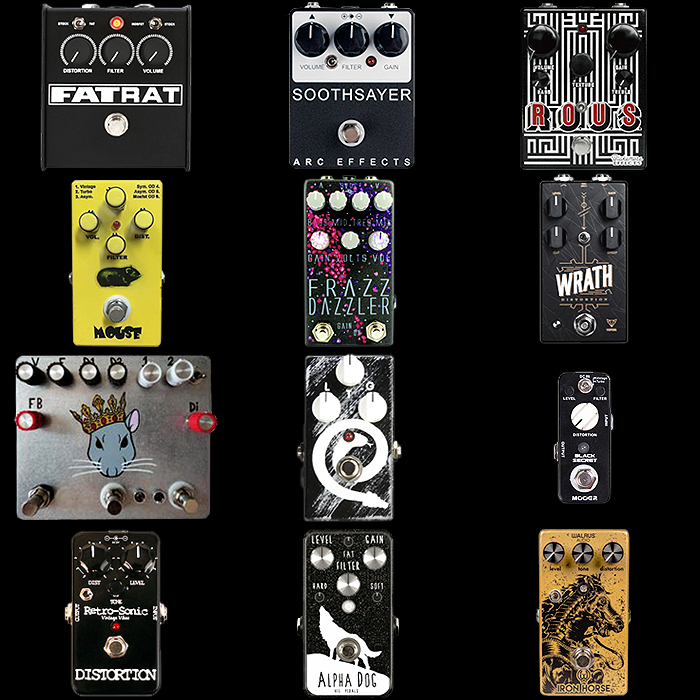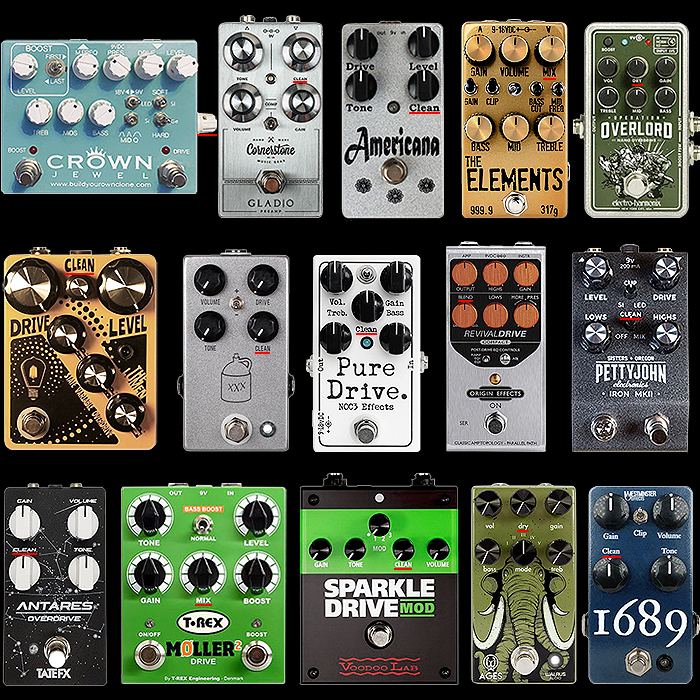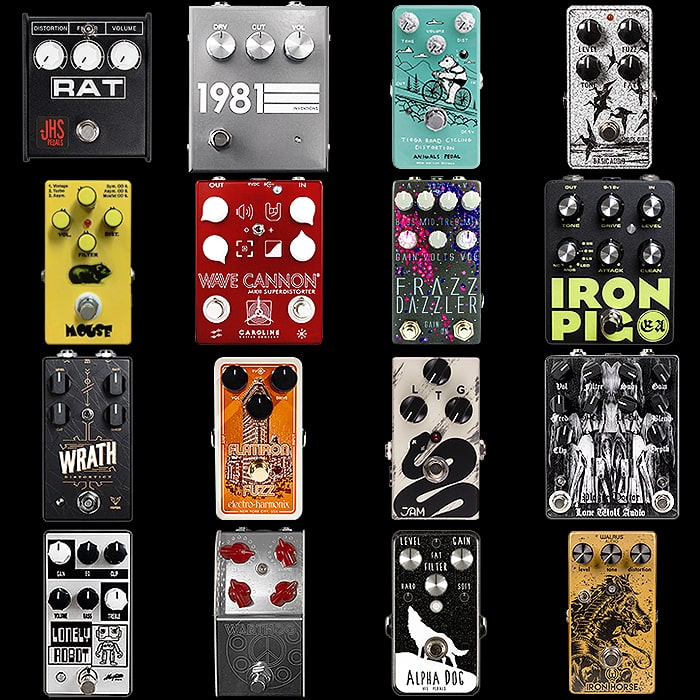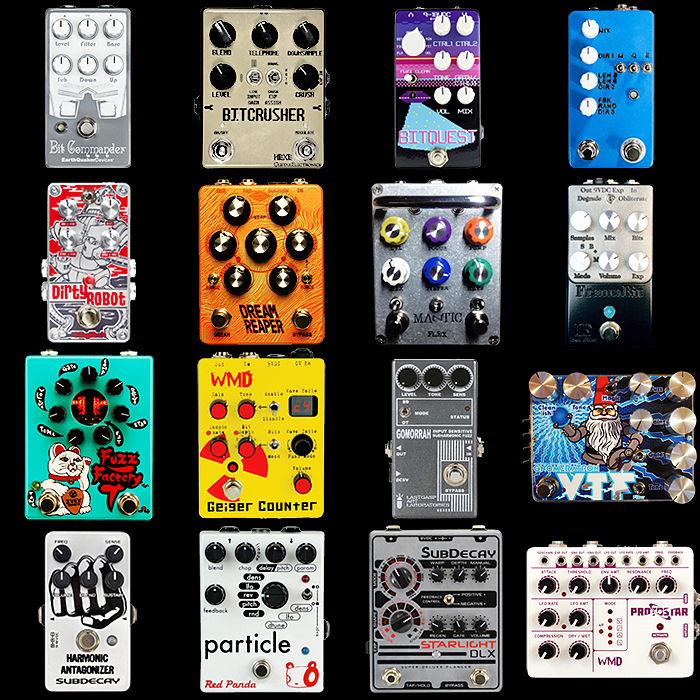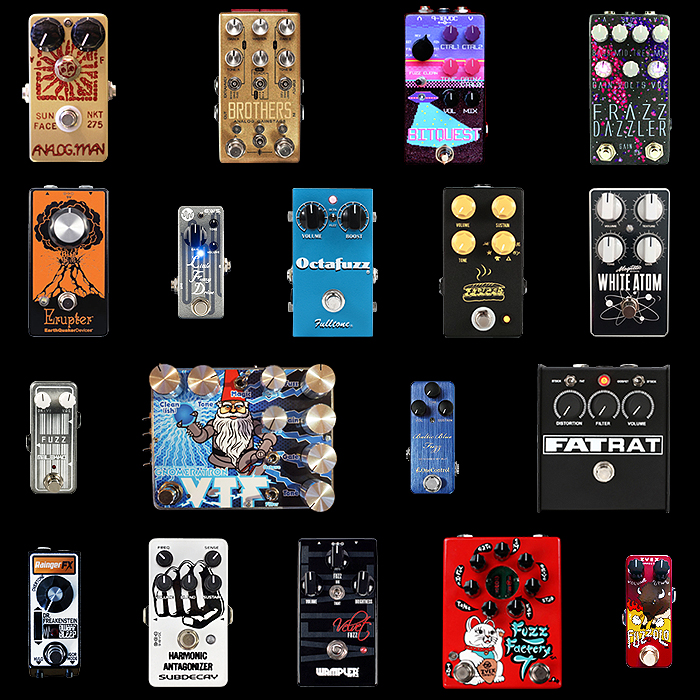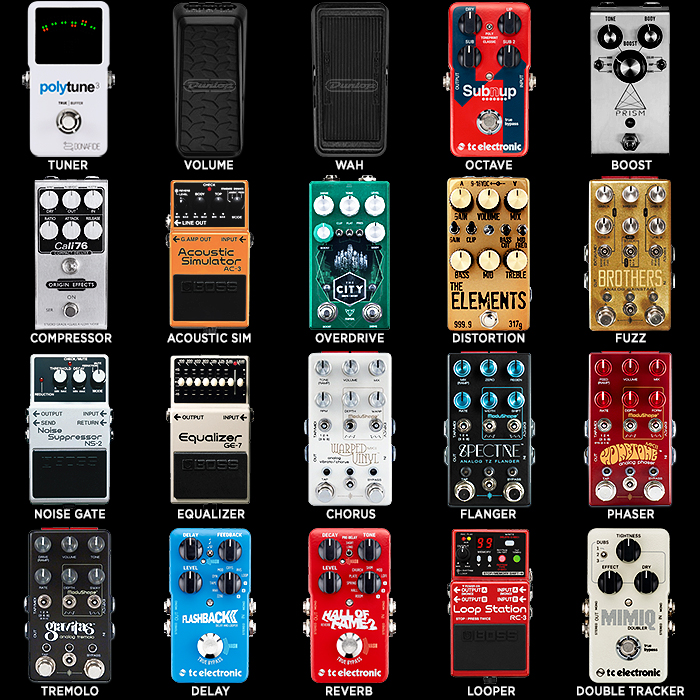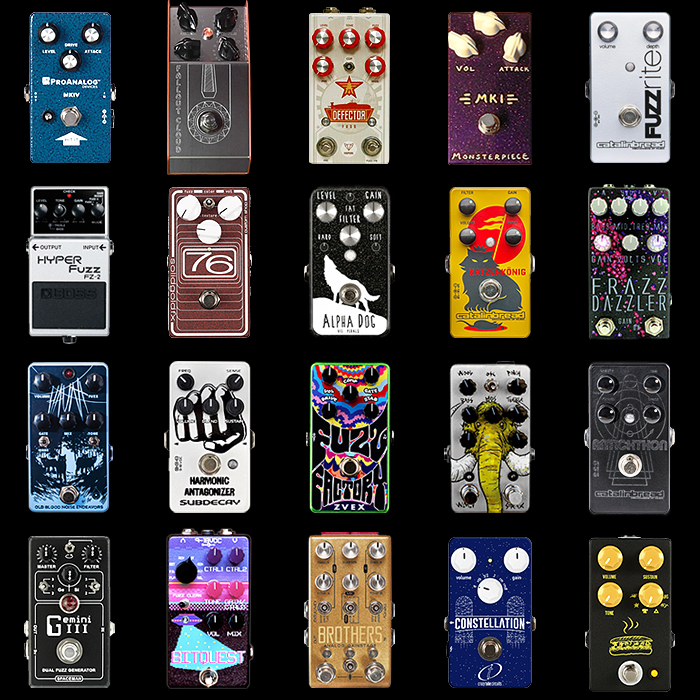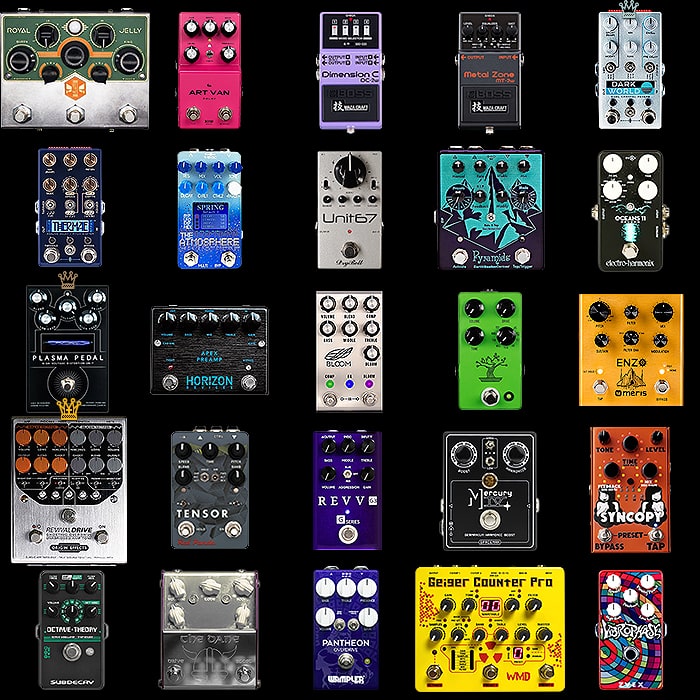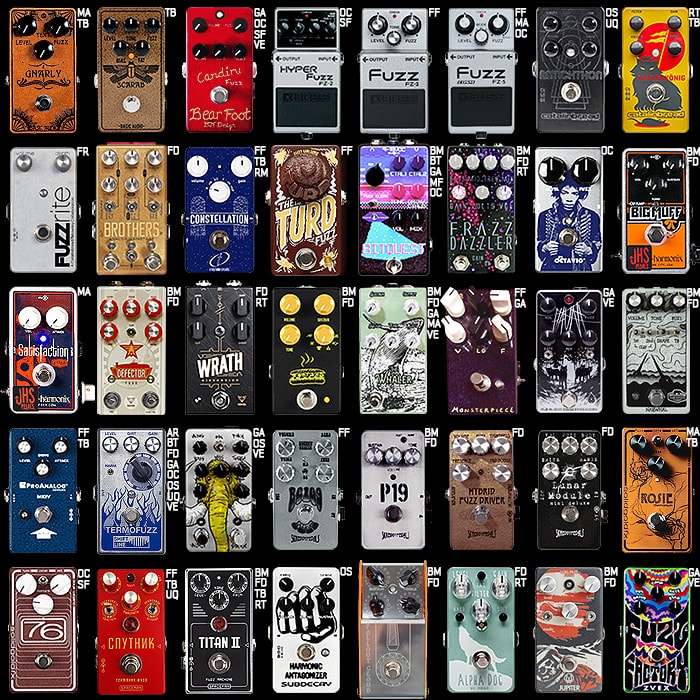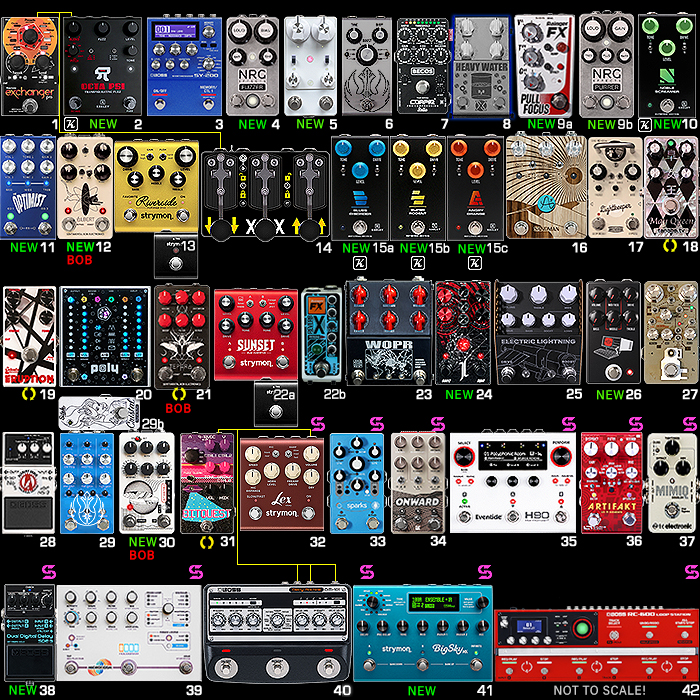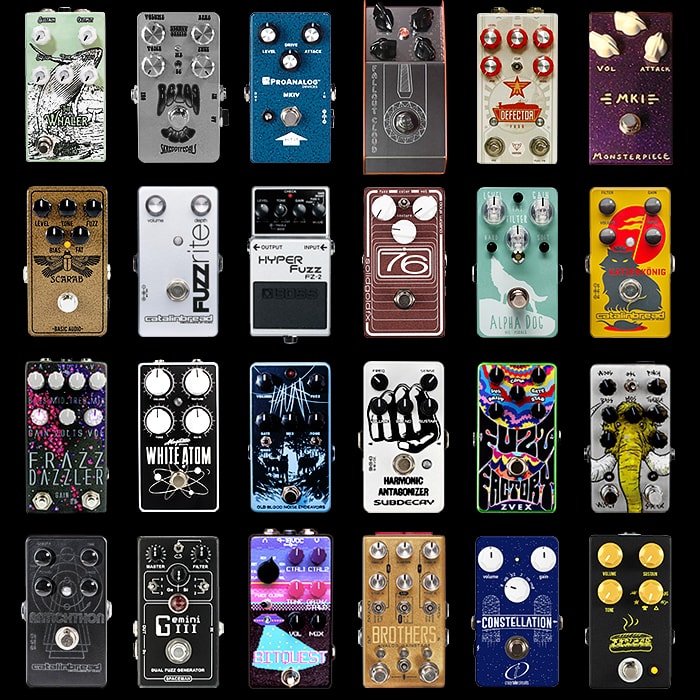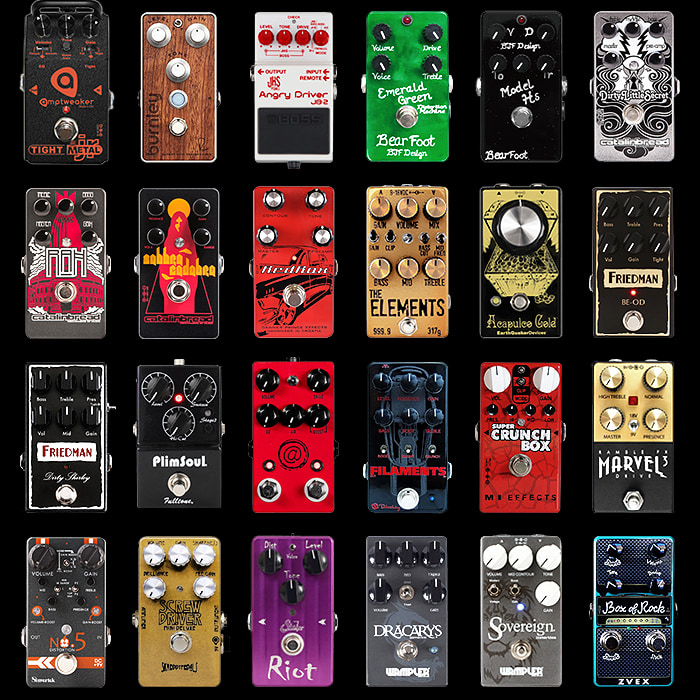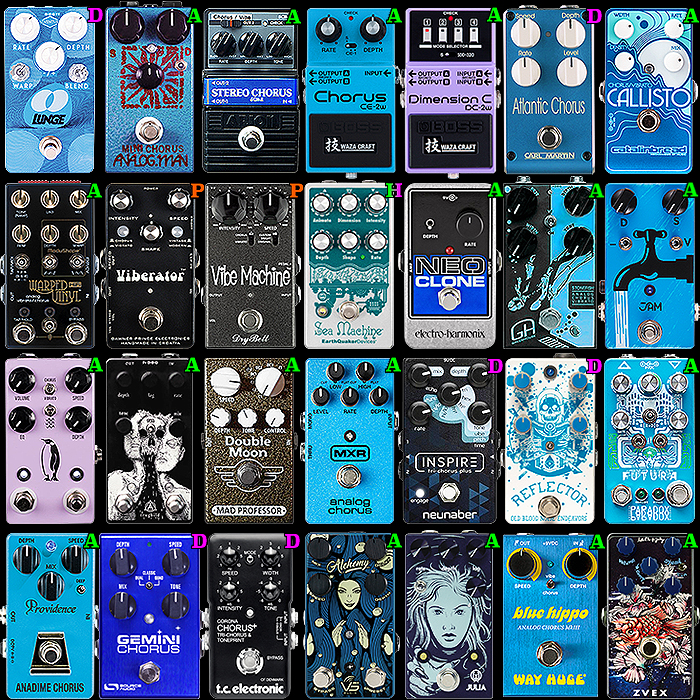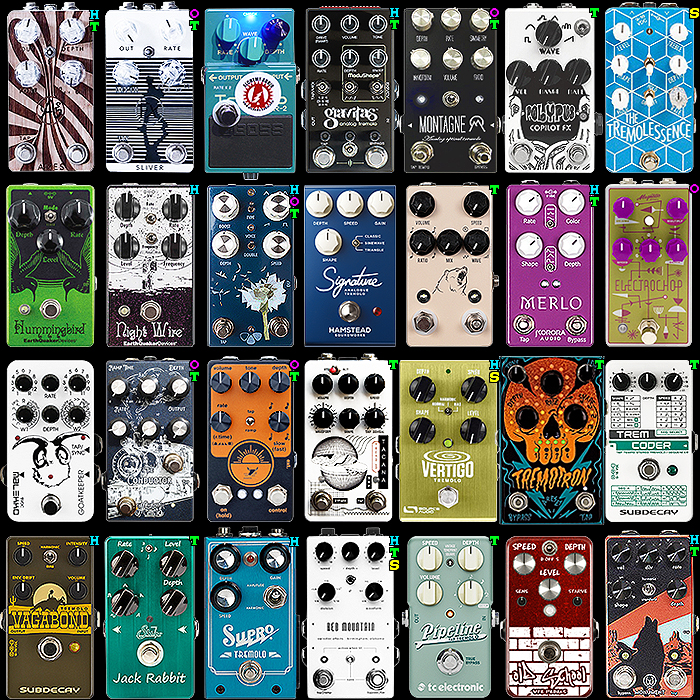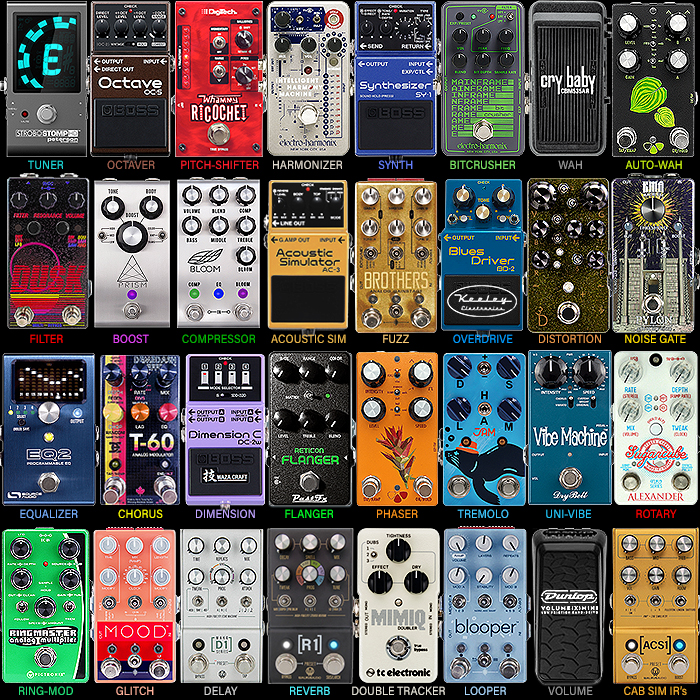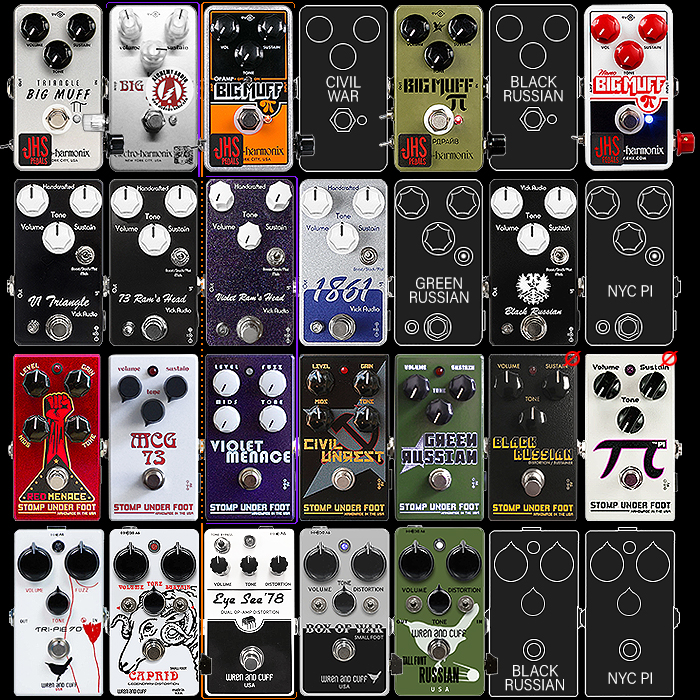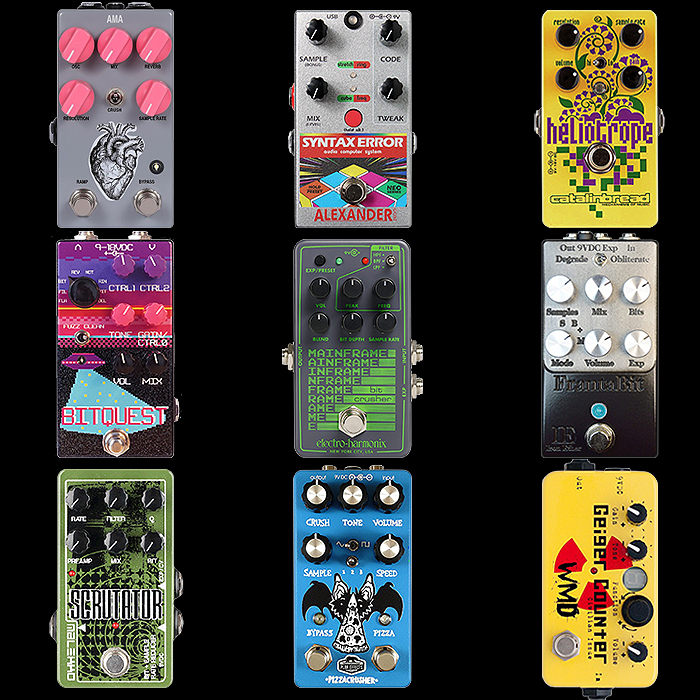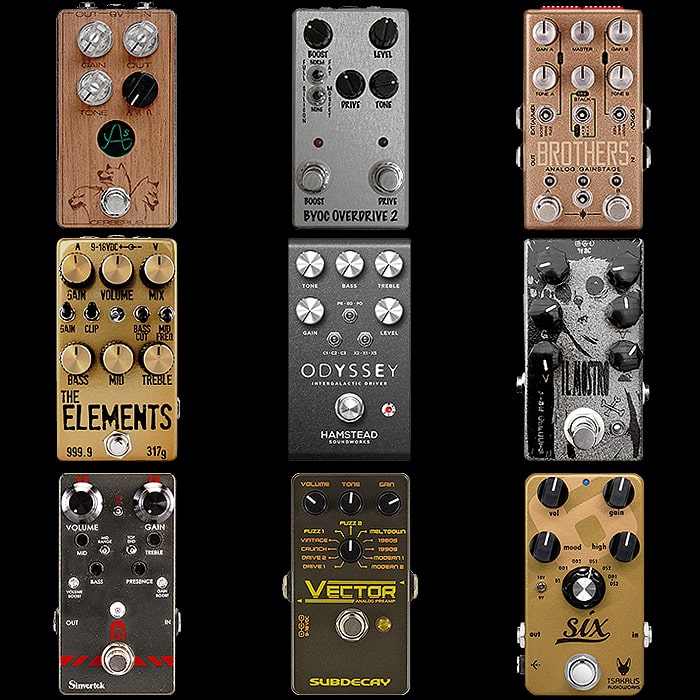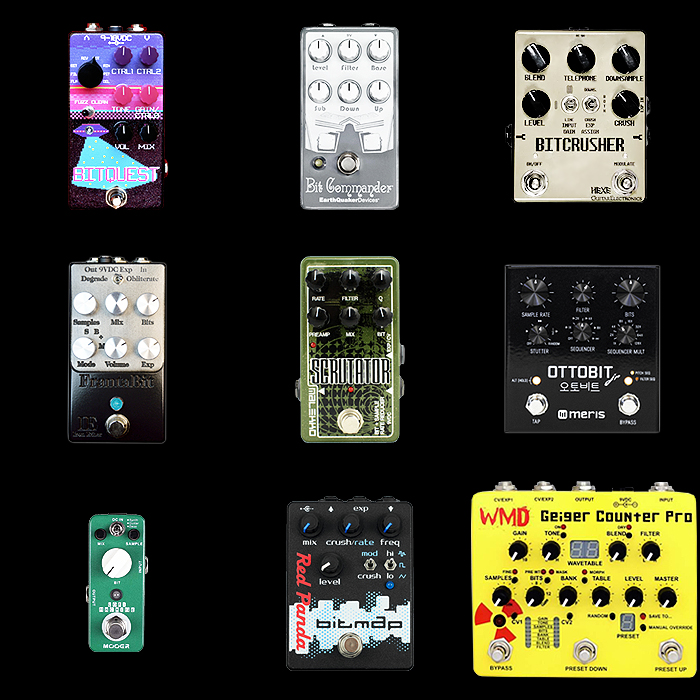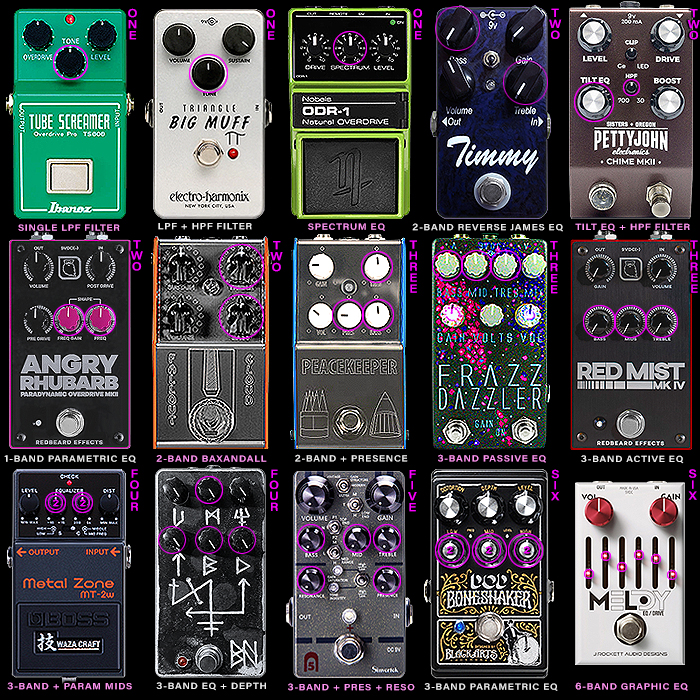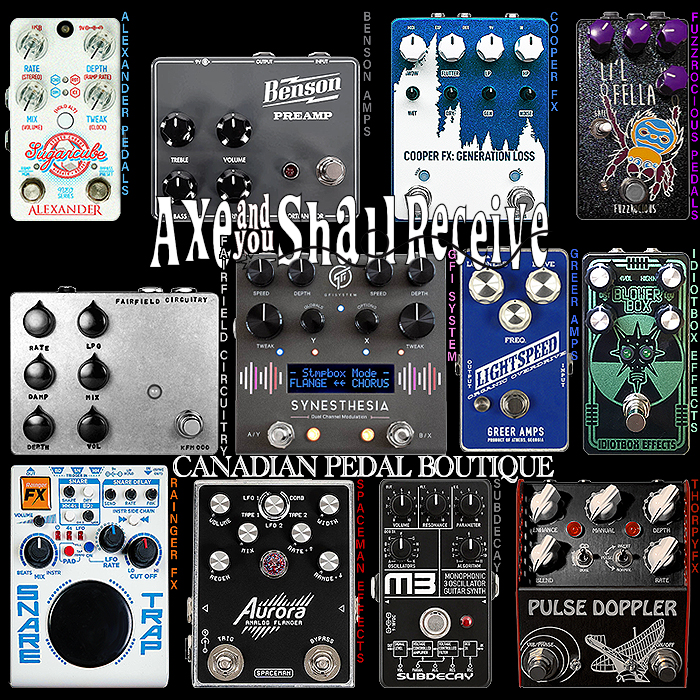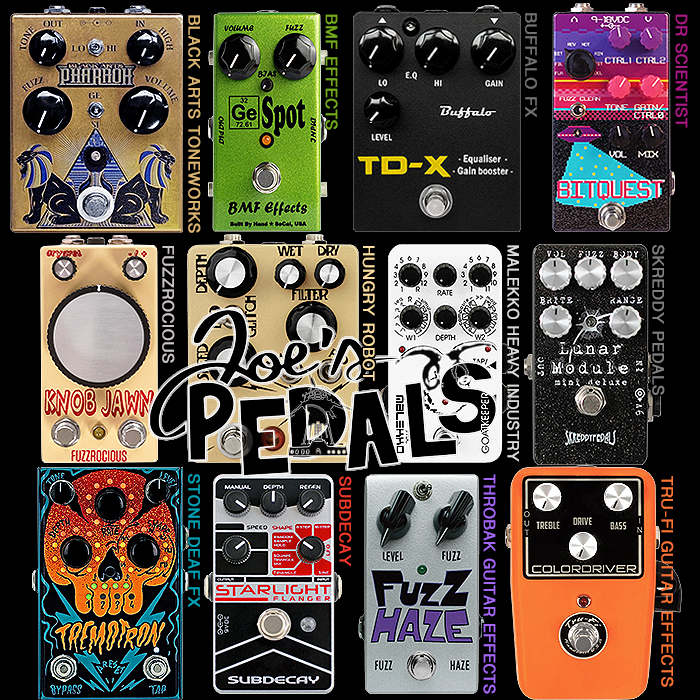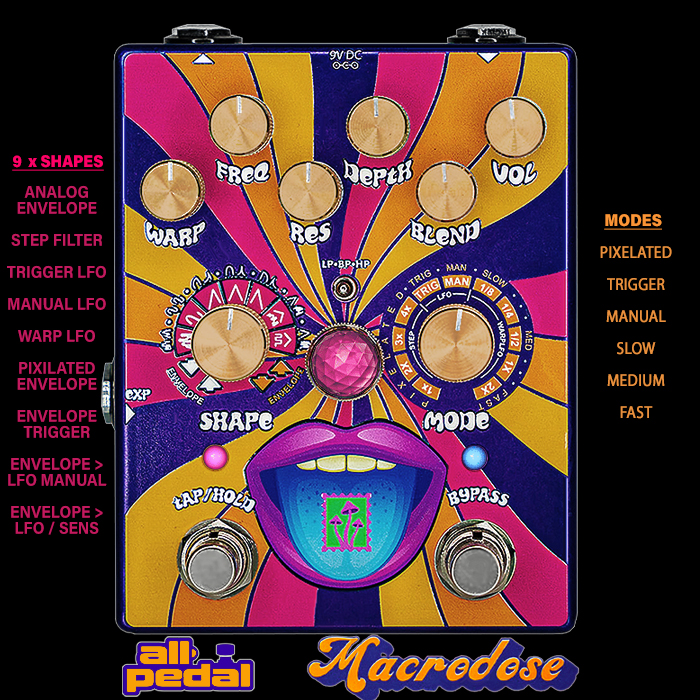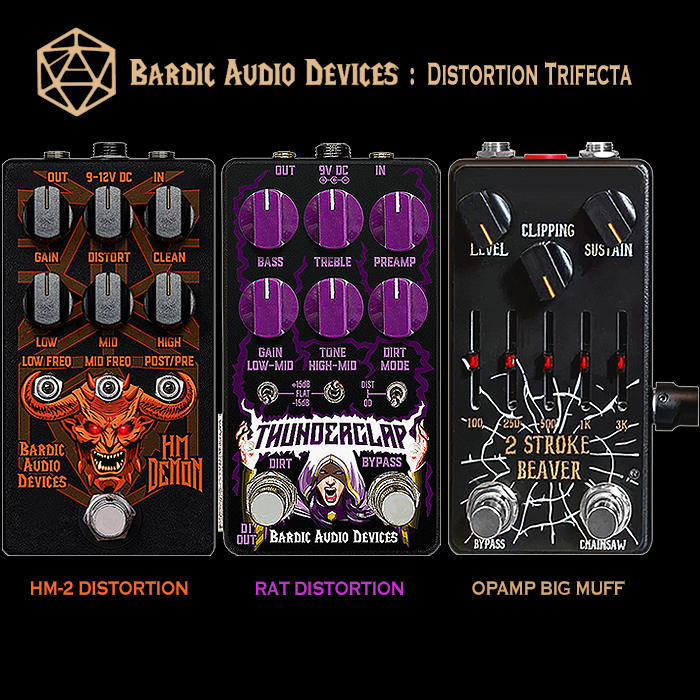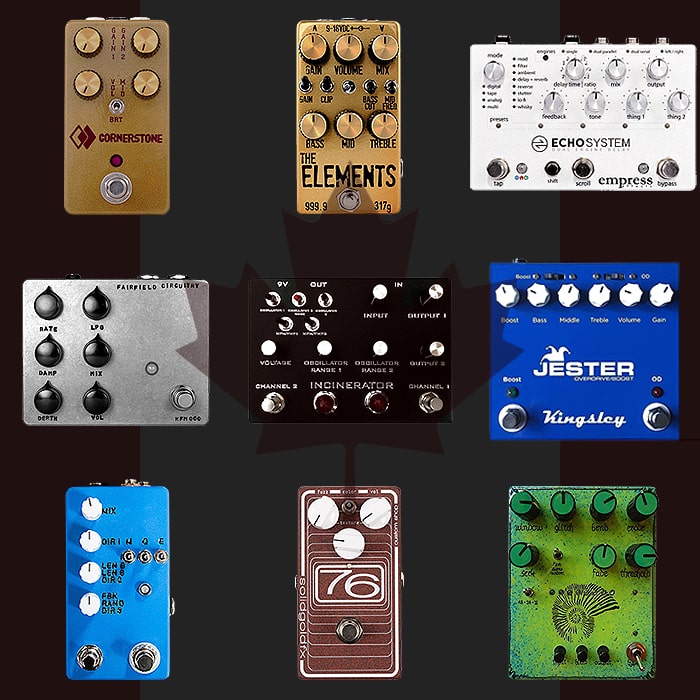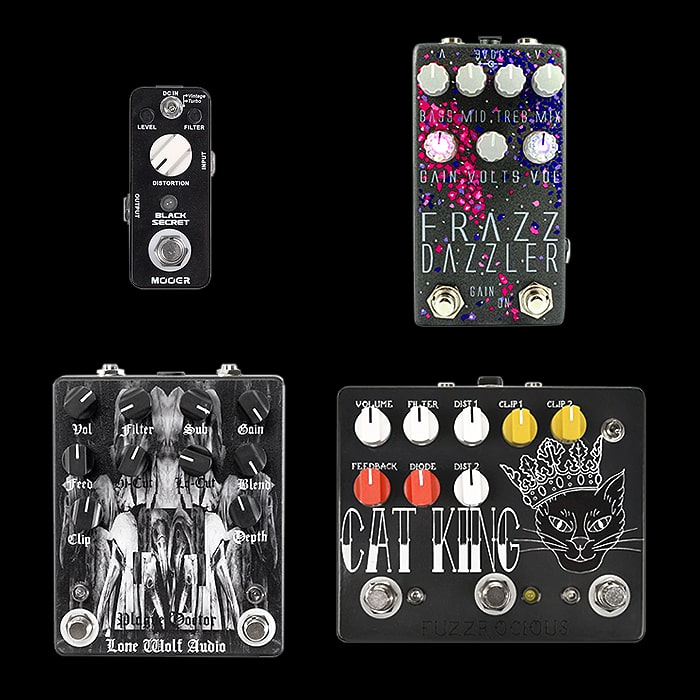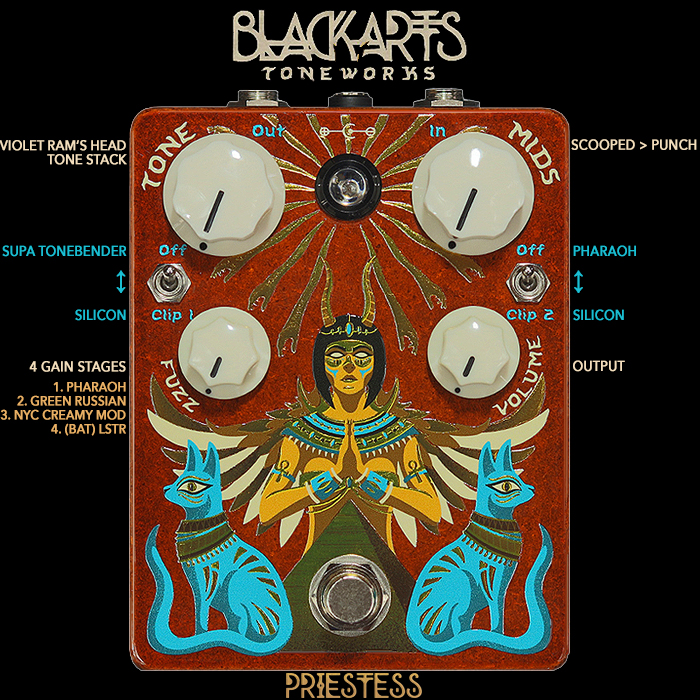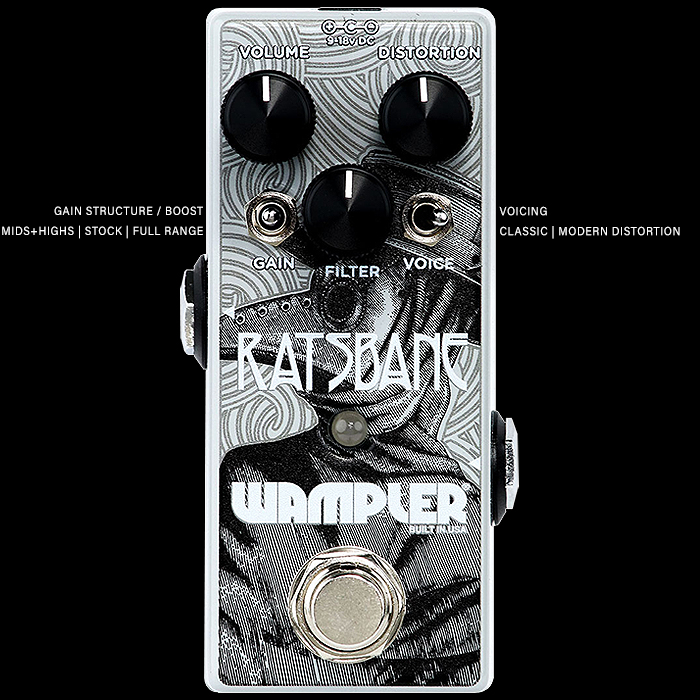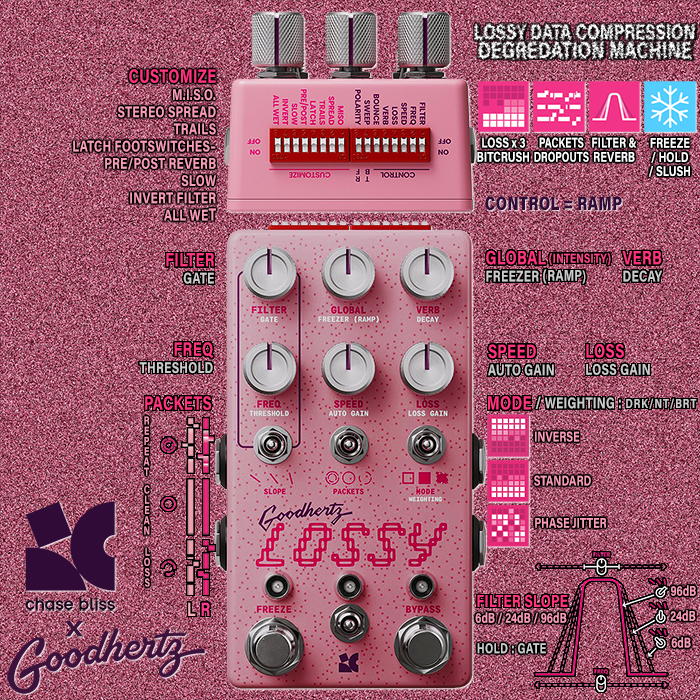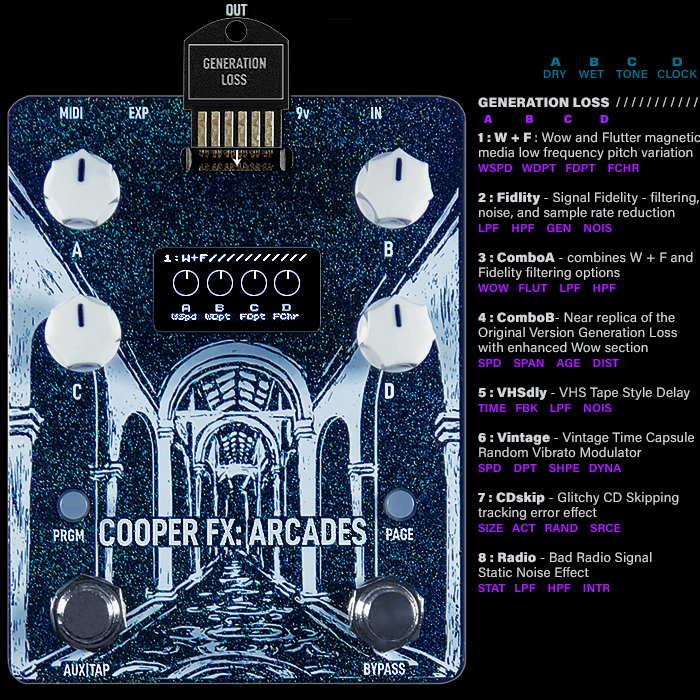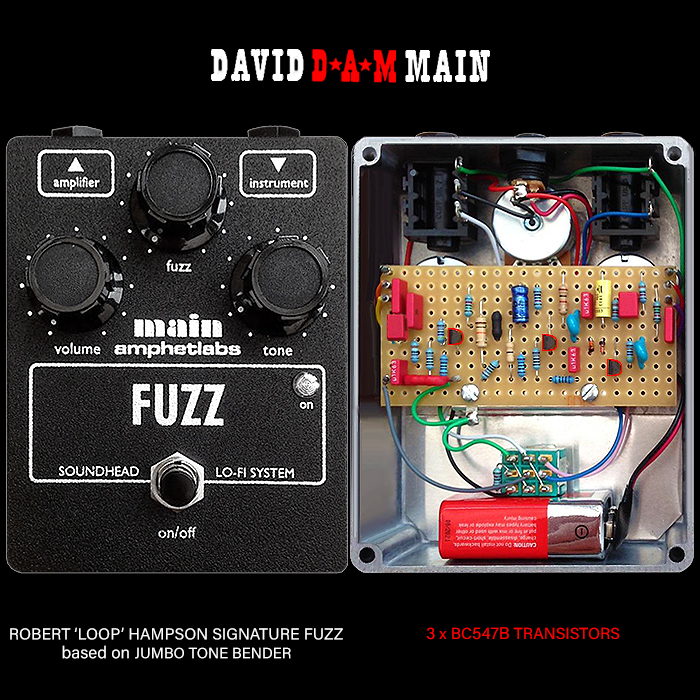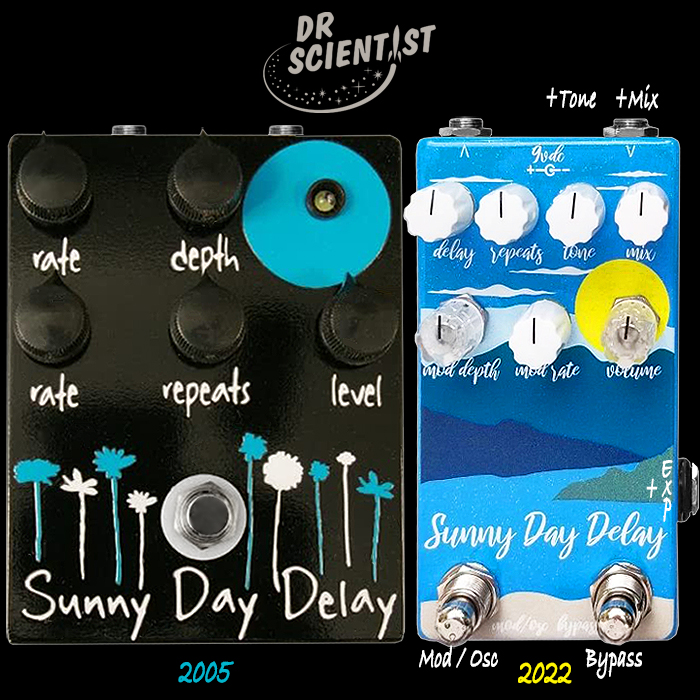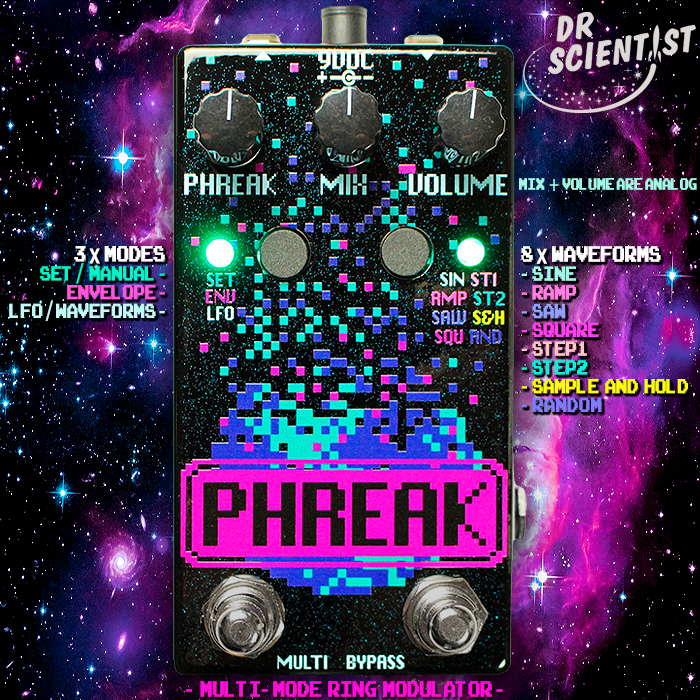9 of the Best Dr Scientist Pedals

I’ve been a fan of Ryan and Tanya Clarke for the longest time, and currently have 4 of their best in my collection, with a couple more on the wishlist. My first and to-date all-time favourite Dr Scientist pedal is the exceptional Frazz Dazzler 2-Channel Fuzz - which while wholly unique, most equate with a Muff style of fuzz, yet for me it’s more of an extended range / high-gain Rat.
So the Frazz Dazzler was my first, then came the BitQuest and next my Gold Bar Edition The Elements. And while the BitQuest was more of a rotational pedal for me, the Frazz Dazzler and Elements have become fairly permanent fixtures in my pedal-chain.
I related most recently my acquisition of the latest Dr Scientist Dusk Dynamic Filter pedal - which went in on slot #4 in place of the Mu-Tron Micro-Tron III. Right now the BitQuest and The Elements are sort of on hiatus, and after an absence of barely a month, the Frazz Dazzler was back on the slot it pretty much owns - #20.
I spent some considerable time deciding on my favourite The Elements edition - as per my ’Look of a Pedal’ feature and the below referenced visual. I really liked the relevance and symbolism of the gold bar - and for the longest time The Elements was my amp-like drive/distortion pedal of choice. It gets rotated back in quite a lot in any case. I feel too that the BitQuest is probably due another rotation any day now.
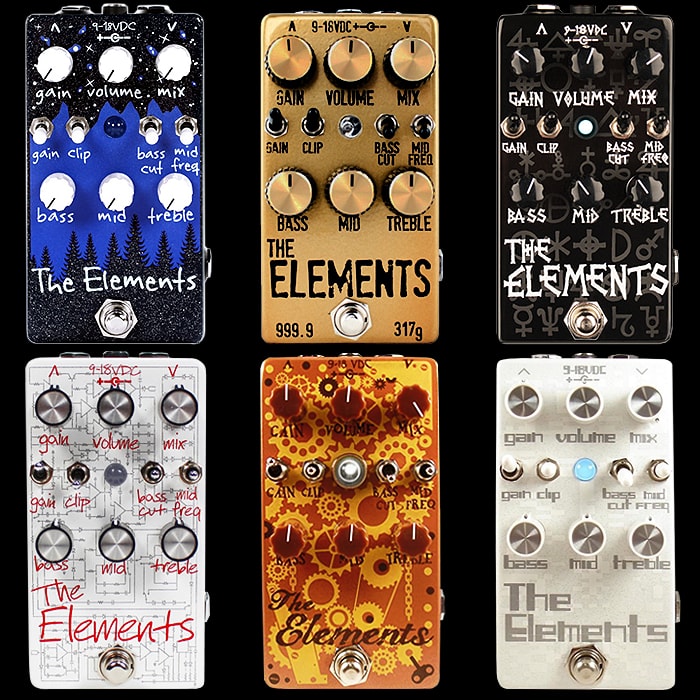
I've actually been toying with this very article for a while, and it seems my timing now is fairly serendipitous as Ryan has just recently teased the return of the Tremolessence Tremolo in some new format. I also feel that the Cosmichorus is probably due for a revival at some stage in the not too distant future also.
The one pedal that I'm kind of actively chasing - but hasn't hit the right price point for a while is the Heisenberg Molecular Overdrive - there is one such example for sale on Reverb.com currently for around £340 equivalent - out of Japan. Most will know my heavy preference for compact enclosure pedals, but I'm prepared to go to vertical-medium format in special cases such as this.
And while there have been a myriad of different variations and editions of these pedals over the years - particularly different artworks and colourways, there haven't been that many different varieties of Dr Scientist overall. There are additionally a couple of pretty LED-Bar utility pedals - Spectrum Analyzer and BoostBot which although pretty cool, couldn't really have a place in my already extensive pedal-chain.
When the Atmosphere Reverb was announced I got really excited at the time, and while I think that it's a great device for mono-rigs, as my rig is stereo though, the Atmosphere alas just isn't suitable for my needs. But I'm pretty sure it's still the most powerful of the mono compact edition Reverbs out there.
I did struggle for a while in deciding which the 9th pedal should be in this feature - before siding with the Sunny Day Delay - which probably deserves to be evolved into some sort of Atmosphere equivalent eventually.
Here below are some further details on each of the featured pedals :
The Atmosphere Multi-Mode Reverberator - £359
As with near enough all of the Dr Scientist's Pedals I follow each one from conception through to launch. And right from the start - this looked like it was going to be a phenomenal Reverb pedal. 16 algorithms, 8 controls, dual-footswitches and a smart intuitive display-screen. Pretty much all elements which are dear to my heart. Yielding maximum usability and utility in such a compact form-factor - which really set the standard for this enclosure-size / class of pedal. Only one slight problem for me in having no stereo capability - meaning it is alas not suitable for my rig - people might say 'get a pair then', but at that cost it's not really a sensible or practical proposition. Everything else about this pedal is fantastic - some truly magnificent sounding reverb algorithms which are really intuitively easy to shape and modify. There's also some MIDI-connectivity here. Were this pedal stereo, there is no doubt that it would have been in the collection by now!
BitQuest Multi-Effect / Fuzz-Modulator - £249
At my time of acquisition there were three different versions doing the rounds - a plainer previous version, one with uniform coloured knobs and the other multi-coloured knobs edition in accordance with the layers of graphics - a design touch which another Canadian Steve Demedash has taken to heart for his T-120 pedals - which also look at their best with multi-coloured control knobs(the metallic ones)! For the BitQuest I keep forgetting whether this started off as a fuzz - with the clean channel being and afterthought or vice-versa. While this is both a fantastic quirky 8-mode Multi-Modulation / Multi-Effects pedal, it's also a phenomenal fuzz in its own right. And when you combine the different effects flavours with the fuzz - you get the most superbly unique Fuzz-Modulator. I still don't believe there is any other pedal quite like this one. It had a long innings in my chain at the start when I first acquired it, but so much has happened of late that I keep forgetting to send it in for another rotation. Before the Atmosphere came about - it was probably equal pegging between the Dr Scientist fans as to whether the BitQuest or Frazz Dazzler was the overall favourite. The only issue here is remembering the CTRL 0,1,2 values for each mode / algorithm. I'm hoping that at some stage Ryan and Tanya see fit to give this a small screen of its own - and extend it more in a somewhat Atmosphere-style direction.
Cosmichorus Multi-Dimensional Chorus - discontinued - $325 when new
This was one of the truly great unsung analog BBD-style choruses - made using MN3007 chips. It was another one of Dr Scientist's stereo pedals, and had distinct Hold, Clock and Phase-Inversion controls. At its height it had scores of dedicated followers, it was a relatively pricey proposition though - while you still get the occasional ones popping up on Reverb.com - but they tend to be the older edition. I've really not seen that many of the last edition going second-hand recently. I feel that once Dr Scientist have done the finishing touches on the forthcoming Tremolessence Tremolo, they could probably do with looking to streamline and modernise this pedal too - as there is always high demand for unique and great sounding analog choruses.
Dusk Dynamic Filter - £189
And so to my most recently acquired Dr Scientist - you will likely have read a few of my articles on the subject by now. I was a little torn between the Dr Scientist Dusk and the Flower Pedals Hosta Filter within the larger desicion process. Yet on balance and after all the appropriate due-diligence I came down on the side of the Dusk being the best candidate for a rotation - in place of my well-loved and long-serving Mu-Tron Micro-Tron III. I tend to stick mostly to the envelope filter mode, occasionally the LFO, but really not so much the Cutoff mode. This pedal works like a dream to me - and exactly met my expectations on how it would work and sound. It's really appealing to look at, tweak and deploy. Just a really smart execution of a modern dynamic filter pedal - this is undoubtedly going to be another Dr Scientist long-termer for me - and no doubt has taken up a semi-permanent residence on slot #4!
The Elements 3-Band Versatile Multi-Drive - £209
My preferred editions of this pedal are the Gold Bar version - which I have, and then the Black Symbols Edition - in fact I probably prefer the earliest white edition too over the latest artwork. Of all the recent Dr Scientist pedals I'm not sure The Elements current artwork serves it particularly well. For me this is just a tremendous sounding proper amp-like drive / distortion / preamp pedal with some really clever extended-range tone-shaping, clipping and gain options. Note that in the higher gain mode you get a quite significantly high noise-floor too - meaning that I don't recommend you use this pedal for the higher gain range without having a noise gate. I've seen other players complain that the noise-floor is too high for them to consider using this pedal, but for me it sounds dynamic, vibrant and alive - somewhat visceral even. It does not sound like any specific amp as such - rather just a naturally overdriving fairly neutral yet dynamically textured tube-style amp, and with plenty of body and significant low-end frequency capabilities.
Frazz Dazzler Dual Channel 3-Band Fuzz with Voltage Starve - £229
Not just my favourite Dr Scientist pedal, but probably my favourite fuzz of all time - with the Chase Bliss Audio Brothers just nipping at its heels - and probably the Abracdacbra Ayahuasca and Spaceman Sputnik III somewhere in the chasing pack too! The second Gain footswitch toggles between low and high gain modes - while I tend to run the pedal pretty consistently high gain - where the control that gets the most use it the Volts / voltage starve / bias sort of control - which delivers some fantastic textures. This is a high-wired visceral lighting-rod of a fuzz with just amazing texture and harmonics. As I mentioned in the intro - most associate this with a sort of high-gain Muff style pedal, while for me it's like a slightly more aggressive extended range Rat-style fuzz.
The Heisenberg Molecular Overdrive - discontinued - $400 when new
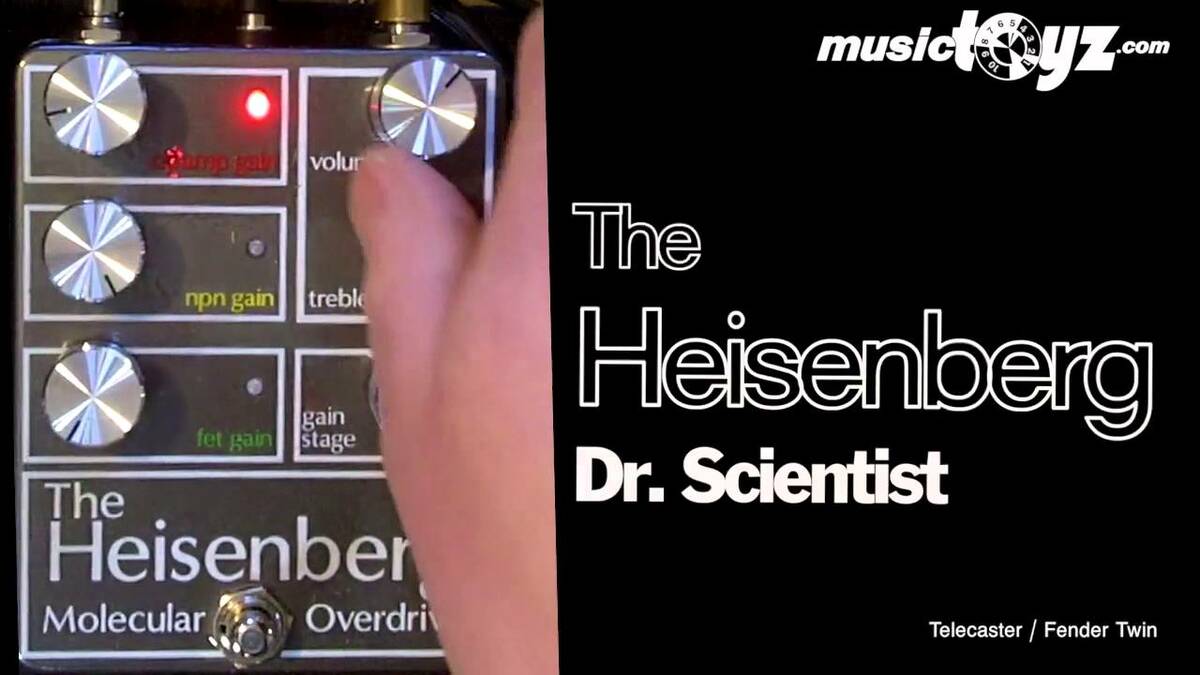
A totally new and revolutionary design of overdrive at the time still not repeated - which uses nano-tech molecular junctions in place of traditional clipping diodes. There are three different varieties of gain generation here that you can select via the Gain Stage rotary selector - OpAmp distortion, NPN transistor fuzz and MOSFET booster. You have a level control for each of those flavours, and separate universal controls for Volume, Treble and 3-way Gain Stage. I'm of course a huge fan of all manner of different styles of overdrives and distortions - and I consider this a sort of a missing piece of the puzzle for me to a degree. It's the one remaining Dr Scientist pedal that I really want to get my hands on - there are just very few in second-hand circulation - and they don't always materialise at the right condition and price and the appropriate time. I would actually quite like to see a MKII version of this where you can mix together the different Gain Stages in parallel!
Sunny Day Analog-Voiced Delay - discontinued - $250 when new
A 500 millisecond analog-voiced warm and dynamic sounding dual-path delay with dual Rate controls, Depth, Repeats and Level. For an analog-sounding delay it also has quite a spacey ambient flavour to it. This is something of an old-fashioned pedal nowadays - especially compared with recent efforts from Keeley and Walrus Audio. Dr Scientist probably need to do something more along the lines of the Atmosphere for their next signature delay. This was the last selected pedal for this roundup - and it doesn't really quite match the innovations of the other pedals listed here. Still sounds great though!
Tremolessence Stereo Analog Tremolo - discontinued - $229 when new
And the good news here is that Ryan has begun teasing the return of the Tremolessence Tremolo. We don't know exactly what format it will take - 99% likely to be a compact enclosure edition - not sure it will retain its stereo ins and outs of this featured version, but I'm hoping it will take on a lot of the aspects of the Dusk - which I really rather like. The last version of the Tremolessence had 6 knobs - Level, Treble, Shape, Depth, Hold and Rate alongside 2 toggle-switches. The upper toggle switches between Triangle and Square Shape - allowing for separate control of each, while the lower toggle allows you to select between Hold - Momentary and Latching modes. The most unique thing about it for sure was its full stereo input and output! I included this in my family recent extensive 28-pedal Tremolo overview.
Final Thoughts
I personally feel that everyone should own a Frazz Dazzler and BitQuest - those two are definite standouts that everyone can use - and the Dusk Dynamic Filter is a very close third. The Atmosphere is the most capable of the compact format Reverbs - with its smart 16 algorithms and high levels of usability; yet it only has mono input/output - so not suitable for end-of-chain placement in stereo rigs.
I feel that The Elements is something of an acquired taste - I personally love it, but know some players that just can't get along with it, and a fair few for whom the high noise-floor factor is a significant issue. I still really want to get my hands on a Heisenberg Molecular Overdrive - but somewhat need the stars to align to make that a real possibility.
We're all excited to see what shape the forthcoming Tremolessence revival takes - I'm genuinely intrigued to see just how much it inherits form the Dusk. I have an inkling that the Cosmichorus may well be next in line after that - as that was a very well received pedal at the time. While for the Sunny Day Delay there is a lot more uncertainty - and I feel that if Dr Scientist ever released another delay pedal it would be much closer to the Keeley Eccos or Walrus Audio Mako D1 - and most likely actually rather more similar to the Atmosphere.
All the Dr Scientist pedals are beautifully uniquely designed distinct circuits with distinct artworks. Dr Scientist is the very embodiment of a hands-on boutique brand - and I love that Ryan is as open as he is in sharing updates about his pedal development processes and musings - and allowing us fans to follow the progress.
All the recent pedals are in broad circulation now amongst international dealers as well as being available from Dr Scientist's own Web Shop - I've acquired mine either via Reverb.com or JoesPedals.com . I hope at some stage to be collaborating directly with Ryan and Tanya - the intention has always been there; we'll see how that all pans out over the next few months and years!



















